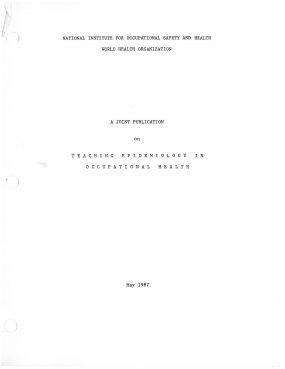Teaching Epidemiology in Occupational Health. A Joint Publication By the National Institute For Occupational Safety and Health and the World Health Organization.
Updated March 13, 2025
May 1987
DHHS (NIOSH) Publication Number 87-112

A joint project undertaken by NIOSH and the World Health Organization has resulted in the publication of this report which focused on the need to train occupational epidemiologists in the recognition and evaluation of occupational diseases and injuries. This was a training tool that used the case approach to instruct epidemiologists. Specific subjects addressed in the manual included: vinyl-chloride (75014) and lung cancer; occupational neurological disease; lung cancer in chemical workers; urinary symptoms in polyurethane foam (9009545) workers; gynacomastia in estrogen exposed workers; lead (7439921) and renal abnormalities (case study); Washington surveillance program on the arsenic (7440382) experience (case study); male occupational reproductive disease; mesothelioma in railroad workers; hypersensitivity pneumonitis in an office building; cancer mortality in a die casting and electroplating facility; leukemia in nuclear shipyard workers; mining related to smoking and lung cancer; mortality study testing a possible association between occupational exposure to formaldehyde (50000) and cancer; exposure response relationship between exposure to styrene (100425) and central nervous functions; occupational asthma due to platinum (7440064) salts; pesticide poisoning among antimalaria workers; chronic respiratory disease in cotton textile workers; farmer’s lung; and epidemiology in planning and development of occupational health services.
